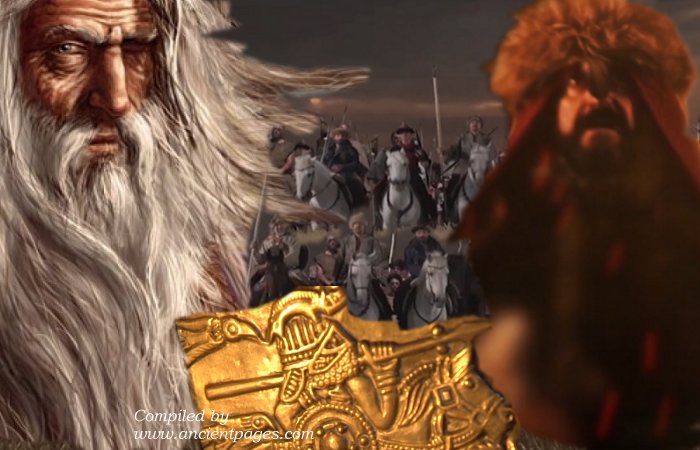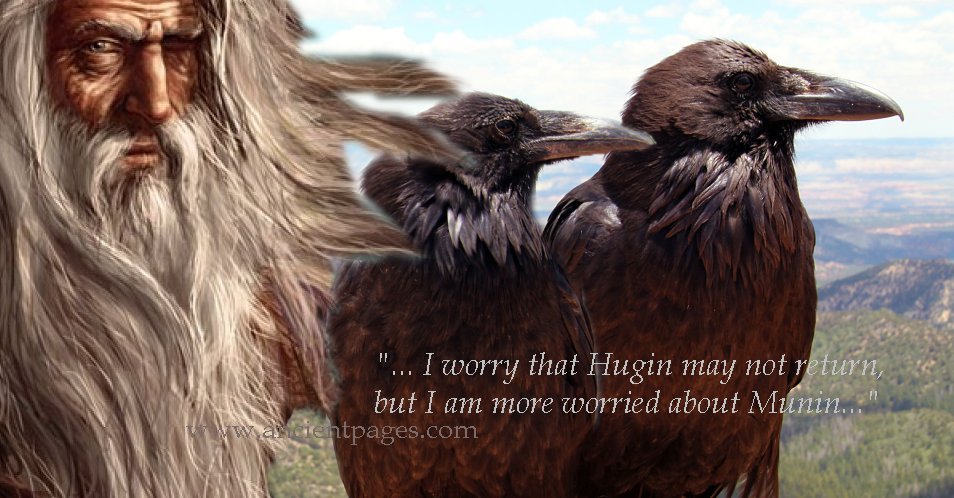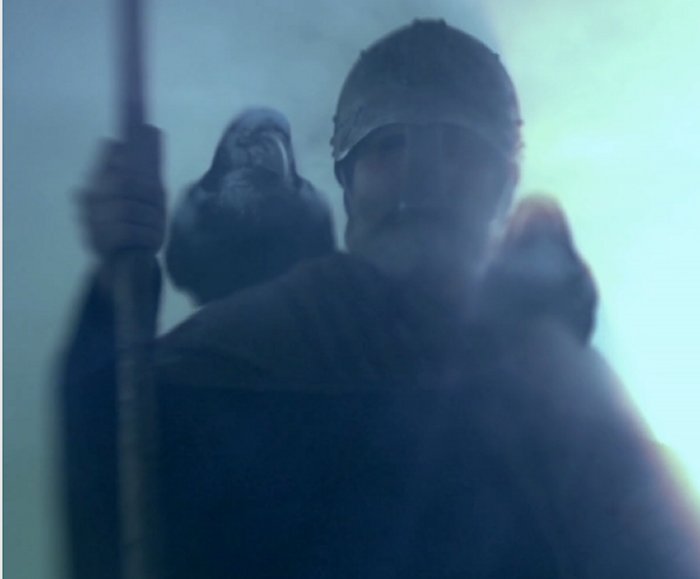Surprising Connection Between Norse God Odin And Attila The Hun Revealed
Ellen Lloyd - AncientPages.com - The theory suggesting that Norse God Odin can be somehow connected to Attila the Hun may seem far-fetched when you hear about it for the first time. What can Odin, who was worshipped in Scandinavia, have in common with the leader of the Huns, a nomadic tribe from Central Asia? Odin was a mythological figure, while Attila the Hun was a historical person whose existence has been proven. Surely, these two individuals have nothing in common, or do they?
While digging deeper into this strange connection, we soon discover the theory is by no means far-fetched.
We know that Odin was the most complex figure of all the Norse Gods. In Viking beliefs, Odin was the God of magic, wisdom, and war. Riding on his horse Sleipnir that has supernatural strength, Odin can conquer his enemy using Gungnir, a magical weapon that is unstoppable in its fight and governs the fortunes of war.
God Odin is a man of war, but also knowledge. He is also regarded as the "Father of the Runes." The Vikings believed runes were created when their chief God Odin speared himself to the cosmic world tree, Yggdrasil in hopes of receiving secret knowledge.
Born north of the Danube River, Attila the Hun, the leader of the Hunnic Empire from 434 to 453 A.D., was famous for his skills on the battlefield, and there is no doubt he was one of the most fearsome enemies the Romans ever encountered.
Atilla's nomadic warriors struck fear into much of Europe, and these barbarians attacked the Roman Empire and invaded the southern Balkan provinces, Greece, Gaul, and Italy. Around 370, hordes of Huns took over much of Western Europe, conquering Germanic tribes and forcing others out of their growing territory. When Germanic tribes saw Attila the Hun and his warriors riding fast on their horses, they knew they had only two options; escape or submit to the invaders.
Some years ago, archaeologists discovered a gold pendant depicting the Norse God Odin and his horse Sleipnir on a farm in Kungsbacka, Sweden. Archaeologists think the precious jewelry can be linked to the Heruli, the Huns, and ancient Romans.
Gold pendant of Odin and Slepnir. Image credit: Bengt Nordqvist
This brings us to more discoveries linking God Odin to Attila the Hun. Those who study Norse mythology and compare stories about God Odin with historical events related to the Huns will find many surprising similarities.
Archaeologist Lotte Hedeager, one of the most prominent Nordic experts on this historical period, compares the Huns' war of conquest with the attacks of the Vikings 400 years later.
Hedeager emphasized the importance of the horse used by the Huns as the primary weapon and the extraordinary riding skills of the nomadic warriors.
A nineteenth century depiction of Attila. Certosa di Pavia – Medallion at the base of the facade. The Latin inscription tells that this is Attila, the scourge of God. Credit: Carlo Brogi - Public Domain
As Hedeager points out, the Huns "could move at a speed that made people around them completely defenseless. For those who saw it, it must have been a complete shock."
The Huns conquered everything they came across, and eventually, the nomads controlled a vast area from Friesland in the west via the Baltic coast to Crimea in the east. Hedeager thinks it's inconceivable the nomadic warriors left Scandinavia as a "small oasis."
Hedeager thinks the Huns' influence may well have extended all the way to Scandinavia during the more than 70 years that their rule lasted, and memories of these historical events can be found in Norse mythology.
Hedeager and other researchers have previously suggested that Nordic people were even occasionally allied with the forces of Attila the Hun to pressure the crumbling Roman Empire on gold in exchange for peace.
Returning to the similarities between Attila the Hun and God Odin, we can start by mentioning the importance of animals.
Hedeager explains that Asian influence can be found if we examine art during this period. Nordic people began to adorn their weapons and jewelry with animal ornaments. Norse people produced art depicting creatures that were a mixture of animals and humans. Ancient Viking jewelry was, in most cases made of silver or bronze and sometimes gold. Many Viking ornaments featured images of animals, particularly twisting shapes of snakes.
God Odin's most trusted companions were animals. He always had his two raven companions, Hugin (Huginn) and Munin (Munnin), on his shoulders. At his feet, Odin had two loyal wolves Geri ('greedy') and Freki ('ravenous'), that kept him company, guarding the border against the giants, who were sworn enemies of men and the Aesir gods.
"We know that the Huns had a shamanistic religion. They believed in the importance of animals as helpers in contact with another world, and Odin has these two ravens that are typical helpers for a shaman," Lotte said in an interview with the Swedish Television, SVT.
It's vital not to misunderstand what Hedeager is implying. She is not saying that Attila the Hun was Norse God Odin. What is suggested is that the myth of Odin may be much older than previously thought. We tend to associate Odin with Norse mythology, but Odin as a god was present in the Germanic pantheon long before Norse people started to worship him.
Hedeager thinks the personality of Attila the Hun may have shaped the image of God Odin.
The Huns had a shamanistic religion. Credit: SVT
"When I researched this, it struck me how great the similarity is between the description of Odin, which we have in the Edda, and the description of Attila. Snorre Sturluson tells us that Odin and his Aesir come in from Crimea," she says.
Are Norse myths memories of the Huns' conquests? Credit: SVT
"One may ask, where do the myths come from? Is it something that someone has invented, or can it be the memories of this that recur in our Scandinavian mythology? We did not want to see the East in our European cultural heritage, but in fact, we have received a lot from the Asian area," she adds.
One has to agree with Hedeager when she says Odin is described as a typical shaman. Readers of Ancient Pages familiar with Norse mythology have most likely noticed that God Odin is somewhat different from other Norse gods. The more we study this fascinating theory and search for similarities, the more plausible it becomes. Perhaps one should seek clues to the identity of God Odin in the history of the Huns and Attila the Hun.
Updated on November 4, 2022
Written by Ellen Lloyd – AncientPages.com
Copyright © AncientPages.com All rights reserved. This material may not be published, broadcast, rewritten or redistributed in whole or part without the express written permission of AncientPages.com
More From Ancient Pages
-
 Mystery Of The Seven Sages In Ancient Myths And Legends
Featured Stories | Feb 20, 2016
Mystery Of The Seven Sages In Ancient Myths And Legends
Featured Stories | Feb 20, 2016 -
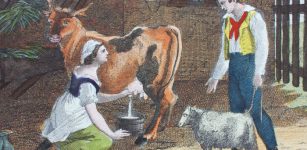 Drinking Milk Increased Ancient Human Body Size – New Study
Archaeology | Jan 18, 2023
Drinking Milk Increased Ancient Human Body Size – New Study
Archaeology | Jan 18, 2023 -
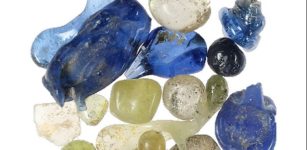 Traditional Viking-Age Crafts: Glass Beadmakers And Their Secrets
Archaeology | Oct 4, 2022
Traditional Viking-Age Crafts: Glass Beadmakers And Their Secrets
Archaeology | Oct 4, 2022 -
 Extraordinary Collection Of Ivory Plaques Dated To The First Temple Period Unearthed In Jerusalem
Archaeology | Sep 8, 2022
Extraordinary Collection Of Ivory Plaques Dated To The First Temple Period Unearthed In Jerusalem
Archaeology | Sep 8, 2022 -
 On This Day In History: The Battle Of The Nile Concludes In A British Victory – On August 2, 1798
News | Aug 2, 2016
On This Day In History: The Battle Of The Nile Concludes In A British Victory – On August 2, 1798
News | Aug 2, 2016 -
 The Anglo-Saxon Migration: New Insights From Genetics
Archaeology | Sep 21, 2022
The Anglo-Saxon Migration: New Insights From Genetics
Archaeology | Sep 21, 2022 -
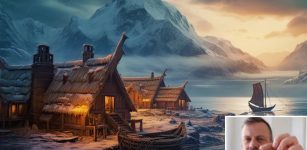 Evidence Vikings Had Windows With Glass Panes Already Between 800 And 1100
Archaeology | Oct 11, 2023
Evidence Vikings Had Windows With Glass Panes Already Between 800 And 1100
Archaeology | Oct 11, 2023 -
 Magnificent Hattusa: Capital Of The Hittite Empire
Civilizations | Apr 11, 2021
Magnificent Hattusa: Capital Of The Hittite Empire
Civilizations | Apr 11, 2021 -
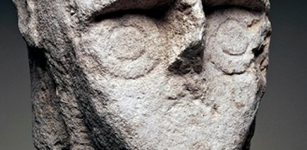 Giants Of Monte Prama – Mysterious Ancient Statues With Unearthly Eyes
Artifacts | Aug 31, 2018
Giants Of Monte Prama – Mysterious Ancient Statues With Unearthly Eyes
Artifacts | Aug 31, 2018 -
 Ancient Wooden Spade Found Under Melting Ice In Norway – Archaeologists Urge Hikers To Stay Alert
News | Sep 16, 2024
Ancient Wooden Spade Found Under Melting Ice In Norway – Archaeologists Urge Hikers To Stay Alert
News | Sep 16, 2024 -
 Mysterious Water Source Belonging To The Goddess Of The Cold Kingdom Of Evil Remains An Archaeological Puzzle
Ancient Mysteries | Dec 6, 2019
Mysterious Water Source Belonging To The Goddess Of The Cold Kingdom Of Evil Remains An Archaeological Puzzle
Ancient Mysteries | Dec 6, 2019 -
 Ancient Maya Ballcourts And Evidence Of Ceremonial Plant Species Offerings
Ancient Traditions And Customs | Apr 29, 2024
Ancient Maya Ballcourts And Evidence Of Ceremonial Plant Species Offerings
Ancient Traditions And Customs | Apr 29, 2024 -
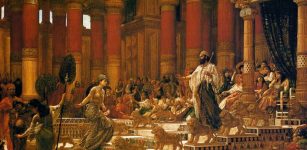 The Magnificent Ancient ‘Flying Airship’ Of King Solomon
Featured Stories | Aug 27, 2018
The Magnificent Ancient ‘Flying Airship’ Of King Solomon
Featured Stories | Aug 27, 2018 -
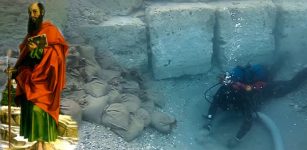 Ruins Of Biblical City Of Corinth Discovered Underwater – Giant Monuments and Remains Of Lighthouse Still Well-Preserved
Archaeology | Dec 19, 2017
Ruins Of Biblical City Of Corinth Discovered Underwater – Giant Monuments and Remains Of Lighthouse Still Well-Preserved
Archaeology | Dec 19, 2017 -
 Lost Medieval Home Of The Lords Of The Isles – Reconstructed Virtually
Archaeology | May 29, 2019
Lost Medieval Home Of The Lords Of The Isles – Reconstructed Virtually
Archaeology | May 29, 2019 -
 Unknown Energy Source Created The Image On The Shroud Of Turin Scientists Suggest
Archaeology | May 12, 2012
Unknown Energy Source Created The Image On The Shroud Of Turin Scientists Suggest
Archaeology | May 12, 2012 -
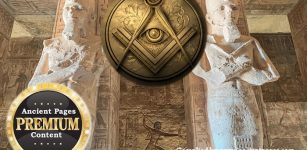 Secret Hidden Freemasonic Messages Concealed In Ancient Egyptian Artifacts And Roman Works – A Misunderstood Object? – Part 1
Ancient Mysteries | Feb 18, 2022
Secret Hidden Freemasonic Messages Concealed In Ancient Egyptian Artifacts And Roman Works – A Misunderstood Object? – Part 1
Ancient Mysteries | Feb 18, 2022 -
 Unique Archaeological Finds Point To The Lost Indigenous Town Of Sarabay In Florida
Archaeology | Jun 20, 2022
Unique Archaeological Finds Point To The Lost Indigenous Town Of Sarabay In Florida
Archaeology | Jun 20, 2022 -
 Common genetic origin for farmers from Central Europe and the Mediterranean area
Human Beginnings | Sep 5, 2015
Common genetic origin for farmers from Central Europe and the Mediterranean area
Human Beginnings | Sep 5, 2015 -
 DNA Study Of ‘Cheddar Man’ Re-Writes Ancient History Of Britain
Archaeology | Feb 9, 2018
DNA Study Of ‘Cheddar Man’ Re-Writes Ancient History Of Britain
Archaeology | Feb 9, 2018

